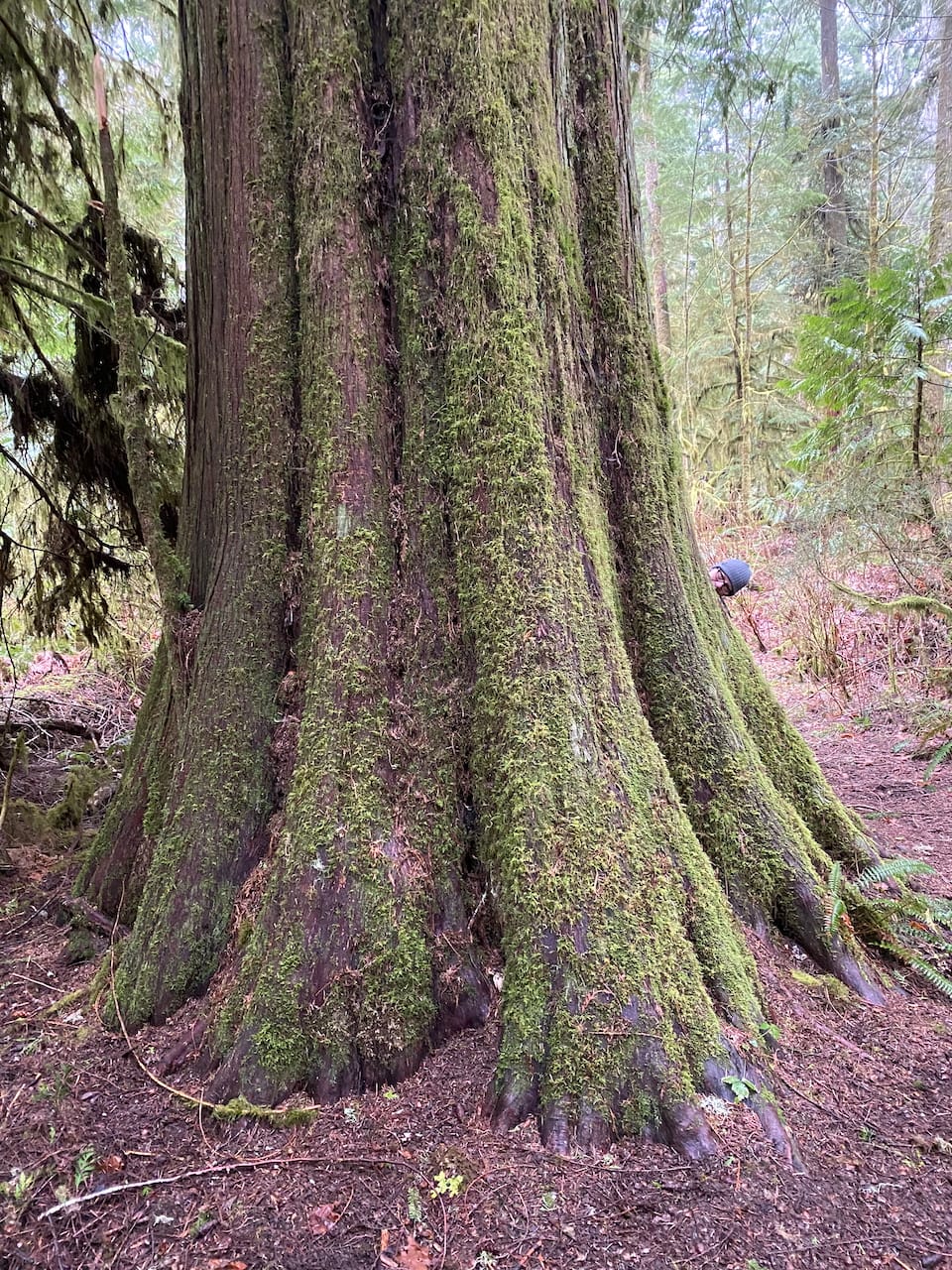Trees
Trees are beautiful and maybe more. Updated: July 2, 2025

* Update*
We received feedback on this article from several readers. We appreciate reader feedback and endeavour to correct or clarify an article where appropriate. In some cases, where differences of conclusions exist in the scientific community, we try to point this out. This is how science happens: when research on the edge of our understanding challenges accepted thought, spawns new research, and gradually grows our understanding of the world. It’s what we love about science.
The feedback surrounded two of the references we used, specifically Thomas Crowther and Suzanne Simard.
Regarding Crowther, he was criticized for his comments in a 2019 research paper for implying that planting a trillion trees would be a powerful carbon drawdown solution. Crowther claimed that he was mis-interpreted as suggesting that planting these trees was a policy objective, rather than a calculation of carbon sequestration potential. He published a clarification to the research. 8 The estimate of number of trees on the planet, which was used in this article, is not the subject of the dispute and is widely used and cited in other articles. While we specifically stated that we could NOT plant our way of climate change, we add a few words to ensure there was no mis-interpretation of our comments.
Simard has been criticized for her use of evocative language, anthropomorphism, and rich metaphors in her popular book “Finding the Mother Tree”. Simard’s book is indeed engaging and thought-provoking, but it is not a scientific study. There is no convergence of opinion in the scientific community about whether plants, including trees, have a form of intelligence, whether this is an advanced form of adaptation, or something different. In fact, the whole topic area of what constitutes “intelligence” is an active debate in this and other contexts. We have changed and added a few words to point out the ongoing research and debate in this area.
Simard’s book is based on her peer-reviewed research that suggests a form of communication through mycorrhizal fungi, along with transfer of carbon and nutrients to genetically-related seedlings. 9,10. We have changed and added some wording to ensure the nuances remain nuanced.
The amended article:
Trees are perfect.
Well, except when they drop their sticky seed pods on the car you parked underneath them. Other than that, from a nature and climate perspective, they are the best carbon sequestration and distribution technology in existence. As a critical adjunct to their role in carbon sequestration, they also synthesize oxygen that keeps humans alive. Some pretty big jobs, which they do quietly and with grace.
They have been at it a long time, with something recognizable as forests first appearing on earth about 350 million years ago. While trees didn’t create the atmospheric oxygen we have today, they did help stabilize it, using their photosynthetic carbon cycle that combines sunlight, atmospheric CO2, and water to create glucose for energy to grow and oxygen as a byproduct. The carbon from the glucose is stored by trees in their wood, roots, and soil.
We use 1880 as our baseline for tracking global warming because it marks the beginning of the Industrial Revolution and rapid growth in uses of fossil fuels and human population. In 1880, atmospheric CO2 concentrations were about 280 parts per million (ppm). How do we know this? Research done on ice core samples of trapped air bubbles allows researchers to determine the historical contents of the atmosphere. Using this data, researchers have calculated atmospheric CO2 levels going back for millennia. During that time, it fluctuated between lows of ~ (approximately) 180 ppm during ice ages, and ~280-300 ppm between ice ages (interglacials).
This stability occurred because the atmosphere was in homeostatis (equilibrium). The CO2 produced from all sources, including respiration, was absorbed and replaced by a roughly equivalent amount of oxygen. And so it went until 1880, when the Industrial Revolution resulted in fossil fuels being burned in ever increasing amounts, causing the CO2 levels in the atmosphere to start to rise in a precipitous and unprecedented way.
Since we are adding CO2 to the atmosphere every year, this concentration will continue to rise, without any known limit, until we significantly reduce greenhouse gas (GHG) emissions.
The two largest natural carbon sequestration sinks on earth are oceans and forests. In terms of the amount of CO2 they store, they are roughly equivalent, each absorbing about 30% of human emissions annually. How they store the carbon, though, is quite different. Oceans absorb some directly into surface water and some through phytoplankton, both of which sink to the ocean floor where they can remain for the very long term, mostly as dissolved bicarbonate/carbonate ions. They are stable and stay there for millennia. Forests/trees absorb CO2 through photosynthesis and the carbon is stored mostly in the roots and soil around trees, some in the wood. Forest-based carbon storage can last for years, decades, and up to centuries; however, through fire, harvesting, and disease, the carbon can be released back into the atmosphere and become a contributing greenhouse gas (GHG). 2
Without geo-engineering, we cannot do much to encourage more carbon sequestration in the oceans. However, on land we can preserve and add trees to increase carbon storage.
Good idea, and preserving old growth forest, stopping deforestation where possible, and encouraging the growth of new forests are all good.
Given the rate of anthropogenic (human caused) CO2 emissions of 36-40 billion tonnes/year 3and the (highly) averaged rate of a mature tree absorption of CO2 of ~ 22 kg/year 4; we would need to add ~1.6 trillion trees to the existing ~ 3 trillion trees 5 to reach equilibrium. Assuming that a mature forest can contain 500 - 1000 trees per acre 6, to plant 1.6 trillion trees would take 6-13 million sq km of land, which doesn't account for the ecological impacts of such a massive program. For perspective, the entire land surface of Earth is ~ 149 million square km, all croplands comprise ~15 million square km, and existing forests are ~40 million square km. Even if we could free up enough arable land to plant, the trees would take decades to reach maturity and become effective at carbon sequestration. As temperatures rise, the ability of trees to photosynthesize decreases.
One other thing about trees and forests. Research done in the last few decades has shown compelling evidence that there may be a kind of "intelligence" in the forest and communication between trees. No, not like humans or animals. Root systems of trees are shown to share resources, water, glucose, and enzymes. Older more mature trees typically help younger trees to grow and thrive, but it works in other ways even between different species of trees. 7 Older mature forests are better at carbon sequestration than new or human tree plantations. These older forests are also better at resisting fire and pests. Trees have been around a lot longer than humans. If we think of human history as a 24 hour clock, trees arrived on earth at around 9:30pm and humans arrived at 2 seconds before midnight.
It seems like a good idea to protect them and let them do their work rather than continuing to destroy them. Just saying.
While reducing emissions of greenhouse gases is the best way we have to stop global warming and climate change, it seems obvious that being friends with trees can only help.
Readings
1. Lüthi, D., et al. (2008). High-resolution carbon dioxide concentration record 650,000–800,000 years before present. Nature, 453, 379–382. https://doi.org/10.1038/nature06949
2. NOAA Climate.gov. 2020. “Ocean’s Carbon Balance.” Climate.gov. Last modified June 17, 2020. https://www.climate.gov/news-features/understanding-climate/oceans-carbon-balance.
3. Friedlingstein, Pierre, Michael O’Sullivan, Matthew W. Jones, Robbie M. Andrew, Luke Gregor, Judith Hauck, Corinne Le Quéré, et al. “Global Carbon Budget 2022.” Earth System Science Data 14, no. 11 (November 11, 2022): 4811–4900. https://doi.org/10.5194/essd-14-4811-2022.
4. Arbor Day Foundation. n.d. “Trees and Carbon Dioxide.” Accessed April 28, 2025. https://www.arborday.org/trees/treefacts/
5. Crowther, Thomas W., Henry B. Glick, Kathryn R. Covey, Christopher Bettigole, Daniel S. Maynard, Stephanie M. Thomas, Jessie R. Smith, et al. 2015. “Mapping Tree Density at a Global Scale.” Nature 525 (7568): 201–5. https://doi.org/10.1038/nature14967.
6. Smith, W. Brad, Patrick D. Miles, John S. Vissage, and Scott A. Pugh. 2004. Forest Resources of the United States, 2002. General Technical Report NC-241. St. Paul, MN: U.S. Department of Agriculture, Forest Service, North Central Research Station. https://www.fs.usda.gov/treesearch/pubs/5907.
7. Simard, Suzanne. Finding the Mother Tree: Discovering the Wisdom of the Forest. New York: Alfred A. Knopf, 2021.
Additional Readings
8. Bastin, Jean-Francois, Yelena Finegold, Claude Garcia, Nick Gellie, Andrew Lowe, Danilo Mollicone, Marcelo Rezende, et al. “Response to Comments on ‘The Global Tree Restoration Potential.’” Science 366, no. 6463 (October 18, 2019): eaay8108. https://doi.org/10.1126/science.aay8108.
9. Simard, Suzanne W., David A. Perry, Melanie D. Jones, David D. Myrold, Daniel M. Durall, and Randy Molina. 1997. “Net Transfer of Carbon between Ectomycorrhizal Tree Species in the Field.” Nature 388 (6642): 579–82. https://doi.org/10.1038/41557.
10. Beiler, Kevin J., Suzanne W. Simard, Dan M. Durall, Melanie D. Jones, and Brian J. Philip. 2012. “Mycorrhizal Networks: Mechanisms, Ecology and Modelling.” Fungal Ecology 5 (6): 472–97. https://doi.org/10.1016/j.funeco.2011.05.002.
